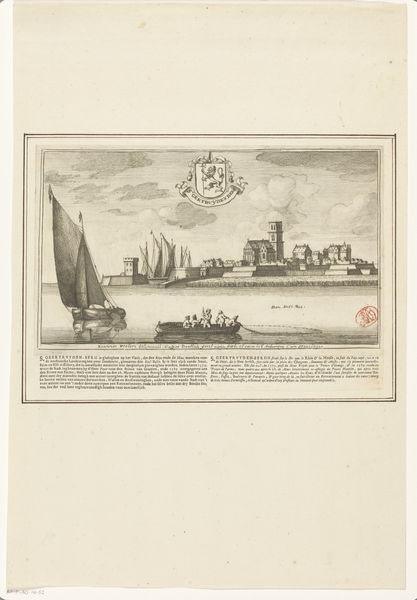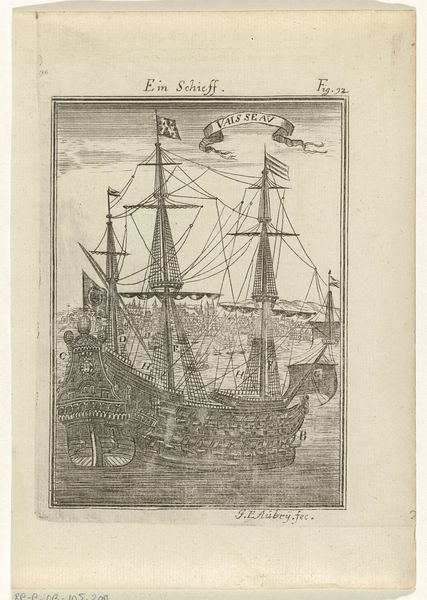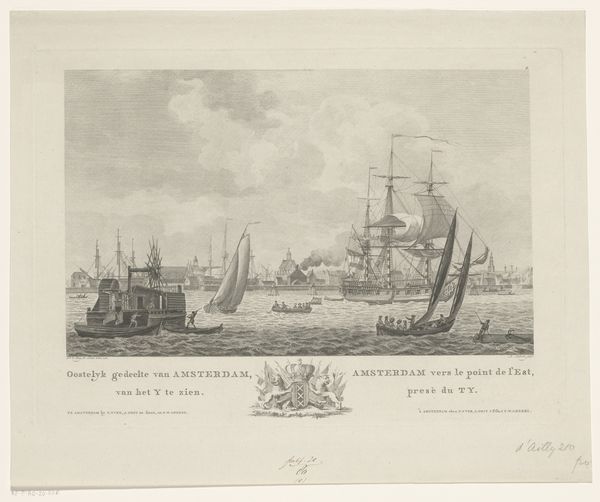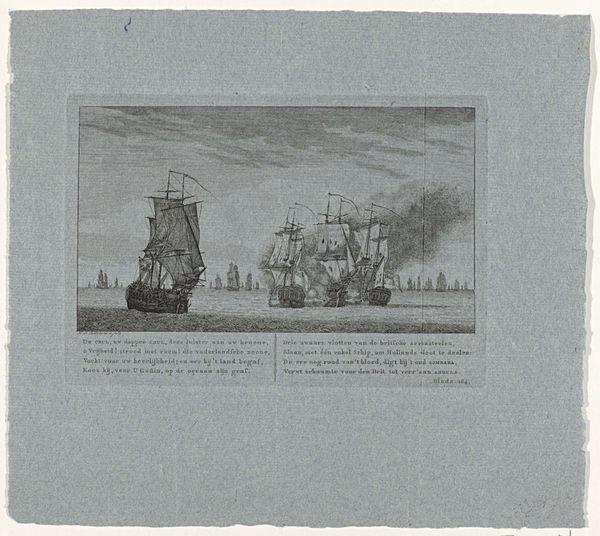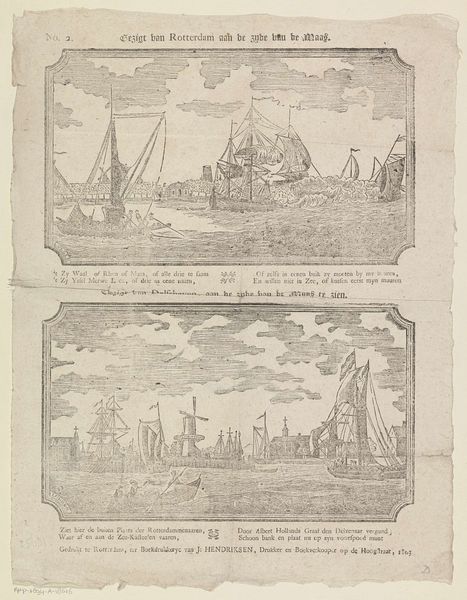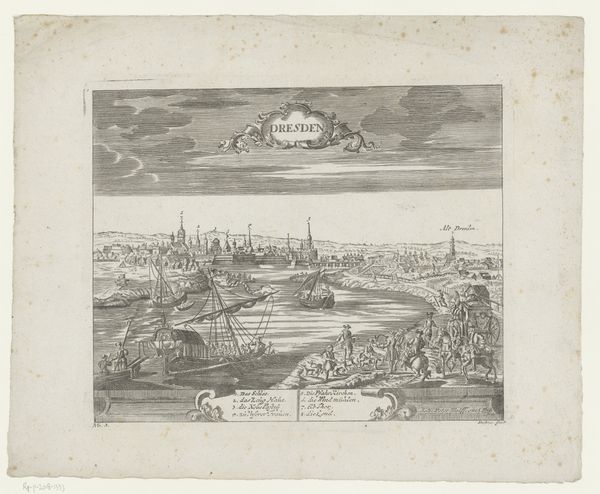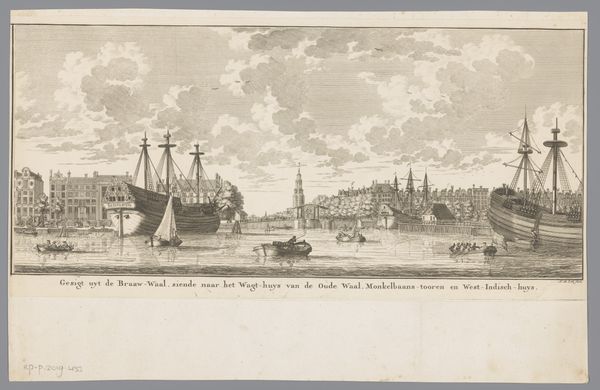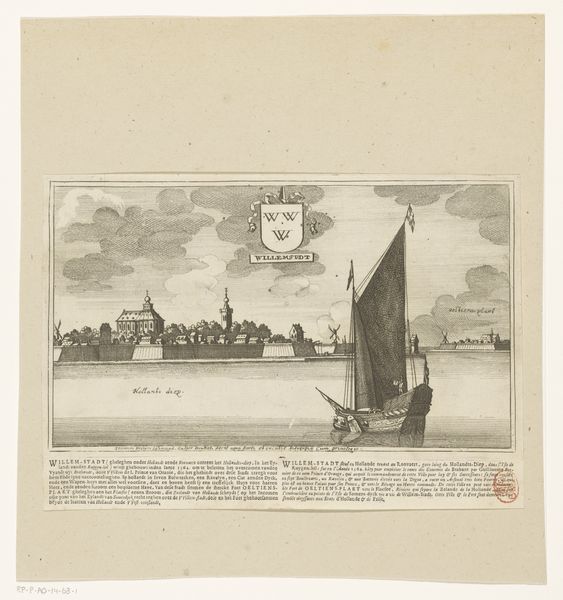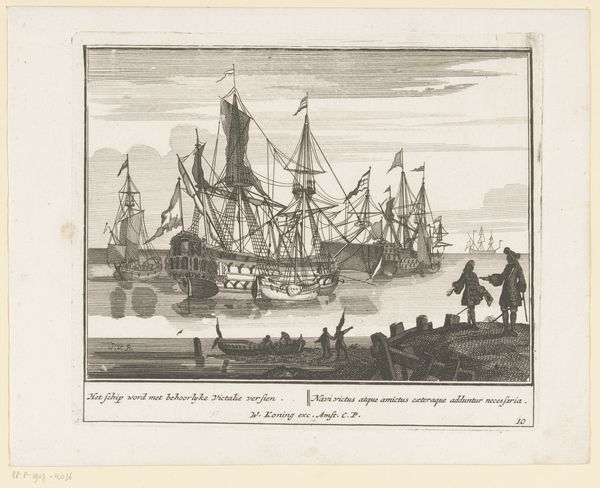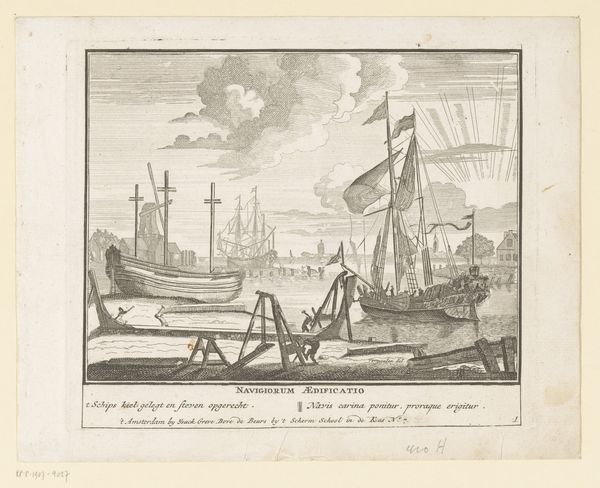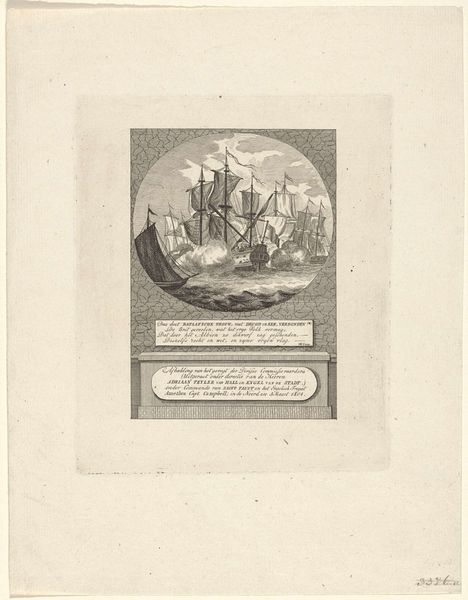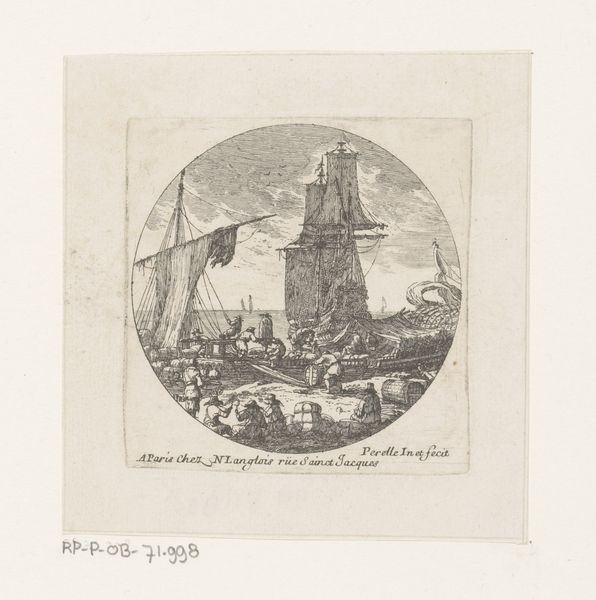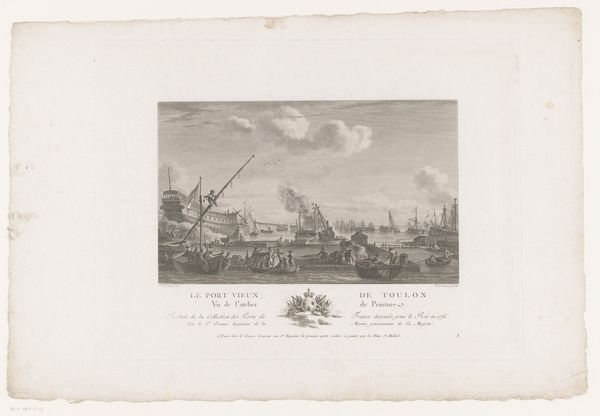
print, metal, engraving
#
dutch-golden-age
# print
#
metal
#
landscape
#
cityscape
#
engraving
Dimensions: height 162 mm, width 243 mm
Copyright: Rijks Museum: Open Domain
Curator: This print, "Gezicht op Kampen," by Gaspar Bouttats, dating back to 1679, captures a view of the Dutch city of Kampen. It’s a metal engraving, currently held in the Rijksmuseum. Editor: It strikes me as serene, almost dreamlike. The muted tones, the still water, and the way the city seems to float in the background create a tranquil, reflective mood. Curator: Cityscapes like these were very popular during the Dutch Golden Age. They served not just as visual records but also as symbols of civic pride and commercial power. Editor: I’m immediately drawn to the activity on the water, how it contrasts against the depiction of a relatively static city skyline. Is this perhaps reflective of contemporary political and economic tensions of the time? Curator: It is definitely a view rooted in trade. Notice the ships depicted; they're indicative of Kampen's prominence as a trading hub at the time, even if the city was already past its prime in the 17th century. The details Bouttats includes—from the rigging to the reflections on the water—demonstrate his skill. Editor: Right, the very crisp rendering makes you think of trade. Also, looking at that little rowboat crowded with people—what stories do they hold? Who are they and what’s the occasion? Curator: It humanizes the scene, doesn't it? It grounds the grand portrayal of the city with a glimpse of everyday life. The text below probably explains more. Editor: Do we know what the function of prints like these would have been? Curator: Certainly multiple ones. Prints were a portable, reproducible means of disseminating information and views. It could be a souvenir for visitors, an emblem of identity for citizens, or even a source of geographic and topographic data. They circulated within networks of power. Editor: This helps clarify its significance in shaping the identity and promoting trade for the depicted cities. I see now a broader story being told by this engraving, related to the self-fashioning of a prosperous and progressive society, however unevenly such a status was spread among its population. Curator: Indeed, considering the cultural context opens many layers of understanding beyond a mere depiction of Kampen. It brings us closer to understanding how the Dutch Golden Age saw, and wanted to see, itself. Editor: Thinking about how images operate, looking at something like this almost 350 years later gives me hope for a similar appreciation in future audiences towards present-day imagery of different kind.
Comments
No comments
Be the first to comment and join the conversation on the ultimate creative platform.
